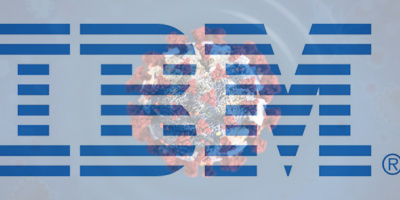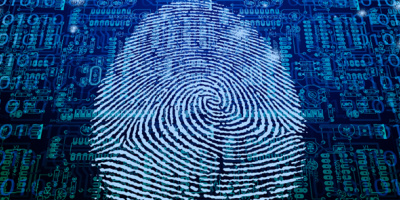I’ve had a number of things stolen over the years, but perhaps the most aching losses were a bicycle, which personified freedom at age 13, and an MG ragtop, which felt a lot like freedom at age 26. Although the experience of theft inevitably left me with a sense of violation and annoyance, I am blessed to live in a time and place where material things are easily replaced and life quickly resumes its consumptively abundant flow.
Though I have never been excessively attached to “stuff,” I am attached to what used to be called having a “good name.” Possessing a good name implied that you were trustworthy and honorable, that your reputation was built on honesty and fair dealing, and that you were a person of sound character.
These days, having a good name is all but out of fashion. When the accumulation of wealth becomes a society’s primary measure of a person’s worth, notoriety in the pursuit of affluence is accepted practice and raises few eyebrows. One’s name becomes less important than one’s spending power. Thus, today’s equivalent to having a good name is having a good credit record.
Good credit is valued because modern life becomes exceedingly complex without it. If debt is the substructure of the economy, credit is its foundation. Whether starting or sustaining a business, or buying a home, an automobile, or some other big ticket item, borrowing money becomes nearly impossible once your credit is flagged as bad. If freedom is the ability to choose, a person’s available choices can be radically delimited by the amount of credit available to her.
That is why identity theft is so contemptible. It assassinates victims’ financial reputations and leaves them to clean up mess after mess as some faceless stranger racks up debt in their name.
Identity theft is the practice of assuming another person’s social security number (SSN), credit card number, driver’s license, or other personal identification for the purpose of theft or fraud. Brian Crane, special agent in the financial crimes unit of the Secret Service, notes that 90 percent of all financial crimes now involve ID theft or ID fraud. The reason is ease of access. The Internet has all but automated the process, and practitioners are organized and growing in number. Russians and Nigerians may have little else in common, but the so-called Russian Mafia and Nigerian gangs traffic widely in identity theft, selling a single identity up to a dozen times. They are not alone.
One needn’t be involved in organized crime in order to filch another’s identity. Fake IDs, including driver’s licenses, birth certificates, and social security cards, are available for sale on the Internet. Credit reports can be purchased for as little as $7.95, and an online
bank account search will set you back $249. Personal information can be obtained from any number of online inquiry sites that promise to supply everything from SSNs to telephone records, business reports, motor vehicle information, and even FBI records.
Credit card numbers are as plentiful as pollen. Using a commercially available database tool, MSNBC “was able to view nearly 2,500 credit card numbers stored by seven small e-commerce Web sites within a few minutes.” Often, MSNBC found, personal data had no security provisions whatsoever. “In all cases, a list of customers and all their personal information was connected to the Internet and either was not password protected or the password was viewable directly from the Web site.” Perhaps not coincidentally, all of the hackable Web sites were running Microsoft’s SQL Server software, an ironic outcome, given that Microsoft is both a partner in MSNBC and itself was hacked this past November.
Government systems are among the least secure. A General Accounting Office report found “only 3 percent of 65 government Web sites surveyed complied with...privacy standards proposed for commercial sites by the Federal Trade Commission.”
What isn’t hackable is easily purchasable. Congressman Jim Leach of Iowa is chairman of the House Banking Committee, which last year listened to nightmarish testimony from people whose identities had been pilfered. Curious about the ease with which confidential information was apparently available, Leach instructed his staff to contact “several information brokers and private investigators” to determine whether private bank account information could be procured. Salon.com reports that “in less than three hours, the first 10 companies they reached were willing to sell detailed account data likely only to be obtained through deceptive means. None turned them down.”
Authorities estimate that identity theft victimizes over half a million people each year at a cost of about one billion dollars, and both numbers are growing. The Federal Trade Commission reports fielding nearly 1,000 calls each week on its identity theft consumer hot line; a number that has doubled since last March. Victims’ stories are harrowing.
Shon Boulden of Hillsboro, Oregon, discovered that people using 12 different names had used his SSN to open multiple bank and charge accounts and to procure fraudulent loans. He notified several credit bureaus and requested fraud alerts be placed on his accounts, but even after they were in place, new accounts continued to be approved.
Michelle Brown of Los Angeles provided written testimony to Congress, in which she recounts the discovery of a “shadow identity” who used her personal identifiers to amass “over $50,000 in goods and services, to rent properties, and to engage in federal criminal activities—namely, drug trafficking.” Reclaiming her life was no easy process. Brown spent “endless days” filing affidavits and notarized documents and making
“thousands of phone calls” in an attempt to clear her name.
The perpetrator, Heddi Larae, who was eventually captured and is currently in prison, was able to get a picture ID in Brown’s name even though she was two inches shorter and 75 pounds heavier than Brown. During Larae’s crime spree, she managed to acquire a $32,000 Dodge Ram pickup, rent a San Diego property, requisition utilities, sign a year lease on another property, and arrange for $4,800 worth of liposuction! When she was apprehended in Texas for smuggling 3,000 pounds of marijuana, using her phony ID, she brazenly identified herself to the Drug Enforcement Agency (DEA) and to a federal magistrate as Michelle Brown. Brown, who was oblivious to Larae’s drug smuggling activities, had now acquired a criminal record.
Remarkably, Larae was released on her own recognizance, even though Brown’s driver’s license number was flagged with a fraud alert. She promptly skipped, and a Texas warrant was issued for her arrest in Brown’s name. Returning from a vacation abroad, Brown was detained in customs as a fugitive. The mess was eventually sorted out, but not permanently. Amazingly, when Larae was finally incarcerated in the Chicago Federal Prison, she was booked under Brown’s name and continues to identify herself as Michelle Brown on letters she mails from the prison.
Frequently, casualties of identity theft report feeling victimized both by the perpetrator and the system designed to protect them. Credit bureaus do little beyond placing a fraud alert on the credit record. In spite of such alerts, numerous victims report that new accounts were nonetheless opened in their names. Police departments may take a courtesy report but rarely have the manpower to investigate nonviolent crimes and seldom have the electronic know-how to track cybercriminals, who typically operate out of their immediate jurisdiction. Banks write off losses, reluctant to incur the additional cost of prosecution for damages they will never recover. Companies inquiring about late payments tend to disbelieve ardent denials of purchase. The burden of proof falls on the victim.
While the process of recovering from financial impersonation is usually long and unpleasant, steps can be taken to reduce the likelihood of identity theft. Foremost is protecting your social security number. It is your only life-long identifier and is the passkey to accessing other personal data. Do not carry a social security card that could be lost or stolen, and do not give out the number unless absolutely necessary. Never write your SSN on a check.
Carry as few credit cards as possible. Cancel unused accounts; dormant accounts can be activated by thieves. Never give your credit card number over the telephone unless you initiated the call and have a prior relationship with the merchant. Never give your credit card number over the Internet unless you’re using a secure connection, which is indicated by Web browsers with a key or lock. Buy a shredder. Use it to dispose of preapproved credit card applications and other confidential documents. Never carry a birth certificate or passport unless essential. If, in spite of these common-sense precautions, you find someone is tampering with your credit, immediately notify the credit bureaus: Equifax, Experian, and Trans Union. They can flag your account with a fraud alert and notify anyone else who may have recently checked your credit and received inaccurate information. File a police report and send a copy of the report to the credit bureaus. Notify the Social Security Administration if your SSN is being fraudulently used. In extreme cases, you may be issued a new number. Contact banks and creditors to cancel old accounts and open new ones. Above all, do not allow yourself to be bullied into paying debts you have not incurred, and report undue harassment to government regulators. For an exhaustive list of precautions, instructions on what to do if you are victimized, and contact information for credit bureaus and government agencies, see the Web site of the Privacy Rights Clearinghouse at www.privacyrights.org.
Personal freedom and identity are irrevocably linked and, to the degree that identity is compromised, freedom is at risk. One of the unintended consequences of computers and the Internet is that the details of our personal and financial lives are essentially forever available for unauthorized viewing. E-commerce is in its infancy, and people whose privacy has been invaded are experiencing its growing pains. Their stories demonstrate that connection, whether personal or electronic, includes the risk of violation.





















 More than ever, there is a demand for IT to deliver innovation. Your IBM i has been an essential part of your business operations for years. However, your organization may struggle to maintain the current system and implement new projects. The thousands of customers we've worked with and surveyed state that expectations regarding the digital footprint and vision of the company are not aligned with the current IT environment.
More than ever, there is a demand for IT to deliver innovation. Your IBM i has been an essential part of your business operations for years. However, your organization may struggle to maintain the current system and implement new projects. The thousands of customers we've worked with and surveyed state that expectations regarding the digital footprint and vision of the company are not aligned with the current IT environment. TRY the one package that solves all your document design and printing challenges on all your platforms. Produce bar code labels, electronic forms, ad hoc reports, and RFID tags – without programming! MarkMagic is the only document design and print solution that combines report writing, WYSIWYG label and forms design, and conditional printing in one integrated product. Make sure your data survives when catastrophe hits. Request your trial now! Request Now.
TRY the one package that solves all your document design and printing challenges on all your platforms. Produce bar code labels, electronic forms, ad hoc reports, and RFID tags – without programming! MarkMagic is the only document design and print solution that combines report writing, WYSIWYG label and forms design, and conditional printing in one integrated product. Make sure your data survives when catastrophe hits. Request your trial now! Request Now. Forms of ransomware has been around for over 30 years, and with more and more organizations suffering attacks each year, it continues to endure. What has made ransomware such a durable threat and what is the best way to combat it? In order to prevent ransomware, organizations must first understand how it works.
Forms of ransomware has been around for over 30 years, and with more and more organizations suffering attacks each year, it continues to endure. What has made ransomware such a durable threat and what is the best way to combat it? In order to prevent ransomware, organizations must first understand how it works. Disaster protection is vital to every business. Yet, it often consists of patched together procedures that are prone to error. From automatic backups to data encryption to media management, Robot automates the routine (yet often complex) tasks of iSeries backup and recovery, saving you time and money and making the process safer and more reliable. Automate your backups with the Robot Backup and Recovery Solution. Key features include:
Disaster protection is vital to every business. Yet, it often consists of patched together procedures that are prone to error. From automatic backups to data encryption to media management, Robot automates the routine (yet often complex) tasks of iSeries backup and recovery, saving you time and money and making the process safer and more reliable. Automate your backups with the Robot Backup and Recovery Solution. Key features include: Business users want new applications now. Market and regulatory pressures require faster application updates and delivery into production. Your IBM i developers may be approaching retirement, and you see no sure way to fill their positions with experienced developers. In addition, you may be caught between maintaining your existing applications and the uncertainty of moving to something new.
Business users want new applications now. Market and regulatory pressures require faster application updates and delivery into production. Your IBM i developers may be approaching retirement, and you see no sure way to fill their positions with experienced developers. In addition, you may be caught between maintaining your existing applications and the uncertainty of moving to something new. IT managers hoping to find new IBM i talent are discovering that the pool of experienced RPG programmers and operators or administrators with intimate knowledge of the operating system and the applications that run on it is small. This begs the question: How will you manage the platform that supports such a big part of your business? This guide offers strategies and software suggestions to help you plan IT staffing and resources and smooth the transition after your AS/400 talent retires. Read on to learn:
IT managers hoping to find new IBM i talent are discovering that the pool of experienced RPG programmers and operators or administrators with intimate knowledge of the operating system and the applications that run on it is small. This begs the question: How will you manage the platform that supports such a big part of your business? This guide offers strategies and software suggestions to help you plan IT staffing and resources and smooth the transition after your AS/400 talent retires. Read on to learn:
LATEST COMMENTS
MC Press Online